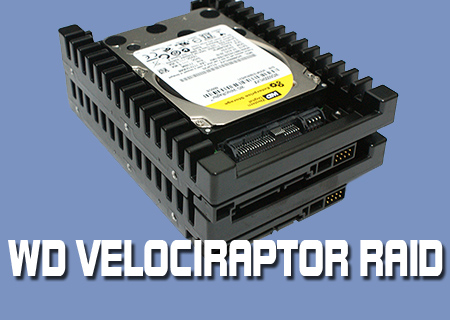WD VelociRaptor 600GB RAID review
Introduction
Back when Solid State Drives were in their infancy there was one clear choice if you wanted to have the absolute highest performing hard-drive available, the Western Digital VelociRaptor.
It was so much faster than the average hard-drive that it seemed to come from the future. The main problem with it was that the capacity was significantly lower than other hard-drives, and yet it cost quite a lot more.
Time moves on and the Solid State Drives have become larger in capacity than their early models, significantly cheaper when it comes to price-per-gigabyte, and pretty much become the default performance choice. Similarly to the old VelociRaptor though the main bone of contention levelled against it is that the capacity is low whilst the price is high, when compared to standard drives.
Of course when we’re at the performance end of the spectrum price becomes much less of a consideration. If you were more interested in saving pennies than performance you’d still be running a P200MMX.
We recently wondered if it was possible to solve the performance/capacity problem by returning from the world of the solid state back to the place it all began, the WD VelociRaptor. To make sure we give it the best chance of really nailing the performance per pound bracket, we’re going to be running 2 600GB ones in RAID 0.
Technical Specifications
No doubting that the VelociRaptor is deserving of its vicious namesake.
| Data Transfer Rate (maximum) Buffer to Host Host to/from drive |
6.0 Gb/s max 145 MB/s sustained |
| Average Read Seek | 3.6 ms |
| Average Write Seek | 4.2 ms |
| Track-to-track Seek | 0.4 ms maximum |
| Average Latency | 3 ms |
| Read Cache | Adaptive |
| Write Cache | Yes |
| Rotational Speed | 10,000 RPM |
| Buffer | 32 MB |
| Error Rate (non-recoverable) | 15 bits read |
| Load/Unload Cycles | 600,000 minimum |
| LBA Support | Yes |
Â
Let’s have a look at what we have today.



